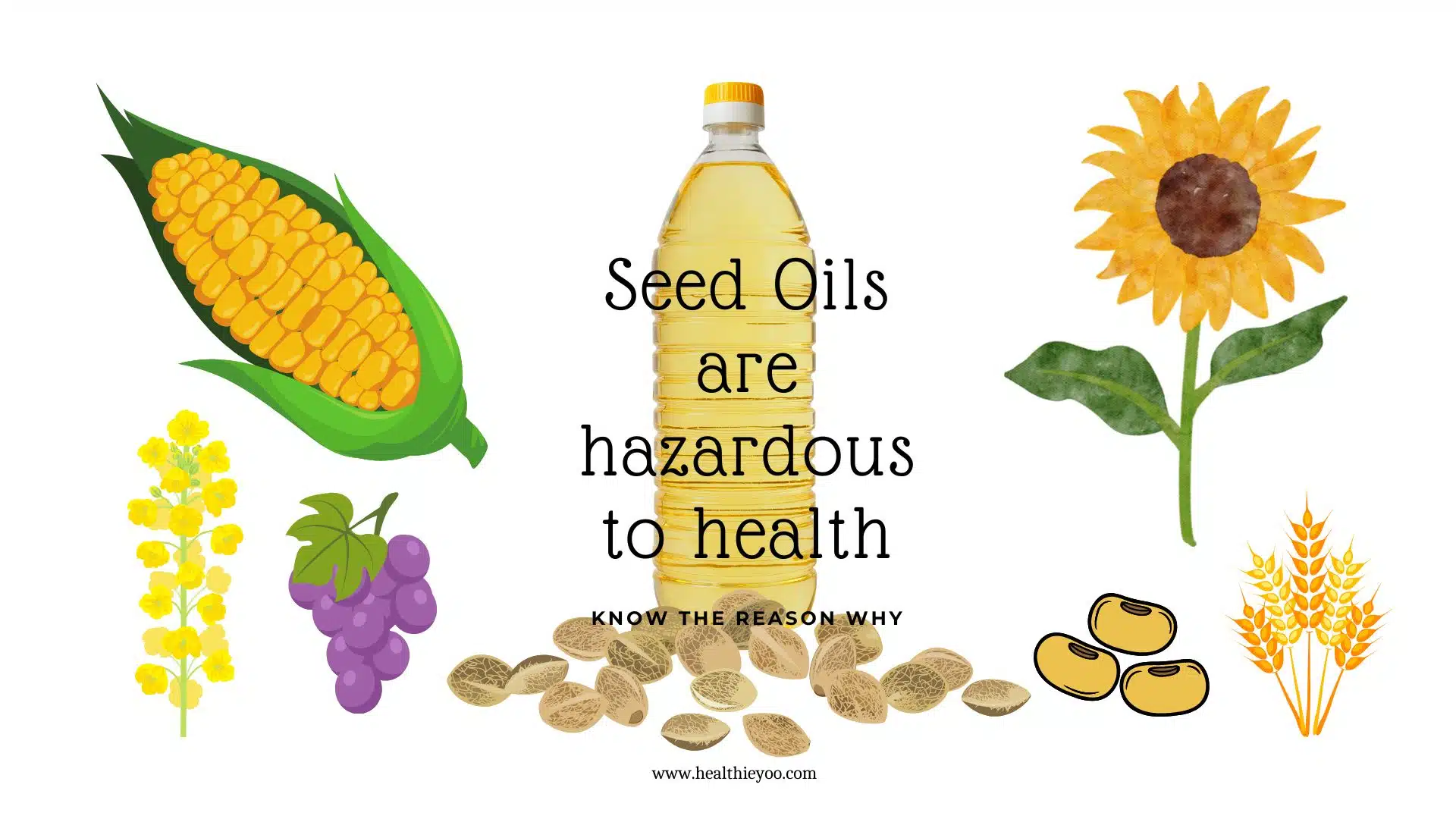What are seed oils? Why is seed oil such as canola, corn, cottonseed, soybean, sunflower, safflower, grapeseed, rice bran, etc. bad and hazardous to our long-term health? Which seed oils to avoid? What is Crisco oil? Why are we consuming poison seed oils?
What are Seed Oils?
Seed Oils. What are they, and why are they bad and hazardous to our long-term health? Which seed oils to avoid?
The eight industrial seed oils are Canola, Corn, Cottonseed, Soybean, Sunflower, Safflower, Grapeseed, and Rice bran. Margarine and various “plant butter” are seed oil mixtures. These are highly processed oils, trans fats, and hydrogenated PUFAs. (1)
In 1911, Proctor & Gamble released a cooking oil called Crisco, an acronym for Crystallized Cottonseed Oil. Crisco was the first seed oil mass-produced, marketed, and sold to the public. The enormous amount of toxic cotton seeds that were left over from the harvesting of the cotton plants had no use. So, this company figured out a way to make money by extracting oil from the cotton seeds to sell as an alternative to chicken fat or beef tallow. They marketed Crisco as a healthier alternative and promoted the convenience that Crisco comes in a can or bottle and can be stored on a shelf. (2)
From cottonseed oil came the other industrialized seed oils mentioned above.
Why Seed Oil is hazardous to our health?
The method for extracting oil from seeds is part of the reason it is bad and hazardous to our health. The seed oil is highly processed, deodorized, refined, bleached, and hydrogenated which involves very high temperatures and questionable chemicals. Additionally, when entering a 98.6-degree heated human body, the seed oils initiate inflammation. They are thus a contributing factor to some of the most prevalent diseases today, including diabetes, dementia, heart disease, and obesity. (3)
Factories must use extreme heat to get the oil out of the seeds. They then have to “clean” the oil using a highly toxic chemical called Hexane. The Hexane is then removed from the oil, though there are traces left that are considered by the FDA to be safe levels for human consumption. This heating process denatures the oil.
Denaturing is the destruction of the characteristic properties of (a protein or other biological macromolecule) by heat, acidity, or other effects that disrupt its molecular conformation. Denaturing causes oil oxidization where it undergoes a reaction in which electrons are lost to another species. This makes the oil rancid and therefore unfit to consume.
Seed oils are poisonous at this point. The oil is now an extremely high form of omega-6 fatty acid. When we consume an out-of-balance ratio of omega 6 to omega 3 fatty acids, our body reacts with inappropriate inflammation which is the precursor to many diseases.
Seed oil is present in almost all packaged foods
Now we know why seed oils are bad, let us see how we consume them. Seed oils are used in almost all processed foods such as potato chips and french fries, crackers of all kinds, pastries, and doughnuts. Seed oils are in TV dinners and other packaged foods like boxed pizzas, macaroni, cheese, cereals, and even today’s packaged bread. Basically, anything that comes in a box, or a package contains seed oil usually. Just read the ingredients on the back of a processed food product and you’ll most likely see canola oil or soybean oil or peanut oil or safflower oil or grapeseed oil etc.
By the way…. There is no such plant as a canola or a canola seed. Canola is a made-up name for Rapeseed which comes from the rape plant. Of course, the name sounds violent, so companies gave it a plant-sounding name that never existed before, Canola. Doesn’t that sound nice? Canola. Today’s food manufacturing companies also renamed these seed oils as “Vegetable Oil” to make them sound healthy. Let’s be clear. Seed Oil comes from the “SEEDS” of plants. Soy and peanut are legumes. Cotton and rape are not even edible plants. A grape is a fruit. So, you see, most of the origin of these supposed vegetable seeds is not from vegetables at all.
Now, when these boxed and packaged food products containing seed oils are housed in factory warehouses and then shipped to stores to then sit on shelves, they are sitting around for months and years. A company will put a use-by or sell-by date that is far in the future. How can they get away with this? What is this illusion that these foods made with seed oils are not going bad? If you open a box or package of processed food, it won’t smell bad. Open a two-year-old container of Pringles or a three-year-old box of Lucky Charms. They don’t smell bad!
Omega 6 fatty acids do not put off a foul odor when they go rancid, and remember, by definition they were rancid as soon as the factory processed the oil from the seeds with high heat. Food companies don’t use omega-3 fatty acids to fry their potato chips. Mcdonald’s doesn’t use omega-3 fats in their vats to fry their fries. Omega 3 fatty acids, when they go rancid, smell awful! This is why fish and eggs really stink when they go bad. Omega 6 fatty acids do NOT smell bad when they oxidize. Again…All seed oils ARE rancid by definition by how they are made. They went rancid as soon as the factories heated up the seeds to extract and clean the oil for bottling.
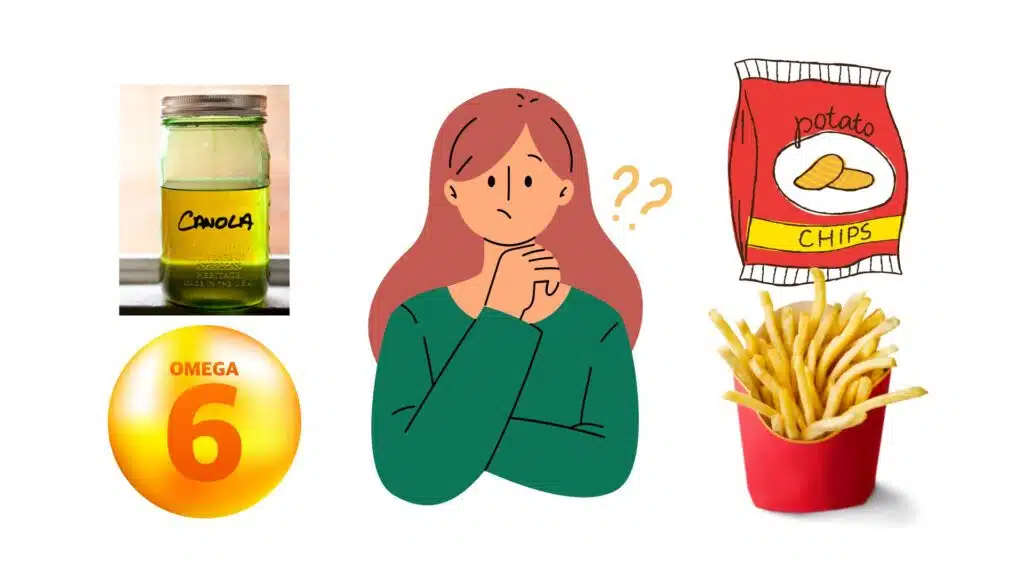
So, then why are we consuming poisoned seed oils?
This sneaked up on us ever so slowly over the decades. It started in 1911 as stated earlier with Crisco, then around World War II when the U.S. government teamed up with the food industry to send meal kits to soldiers called C-Rats, (short for C rations.) These consisted chiefly of canned corned beef or bacon and cans of hardtack biscuits, as well as ground coffee, sugar, salt, and tobacco with rolling paper. To preserve these foods, they were sealed in cans and the seed oils were used as a preservative. (4)
After the war, the food industry saw a huge profit future, and off they went making processed foods for the average American citizen marketing them as convenient, healthy, and tasty. Grocery stores with refrigerators and freezers popped up all over and in the great prosperity of the post-WWII 1950s, our diets forever changed. Now, without even thinking, people are eating foods that are almost all processed containing massive amounts of carbs, sugars, and seed oils.
Obesity, heart disease, type 2 diabetes, and several other diseases skyrocketed from 1950 to the present. Then, in 1980, the USDA and HHS put out their dietary guidelines and the FOOD PYRAMID with lots of grains at the bottom. About every 5 years after 1980, they updated the guidelines, but the pyramid kept the “healthy grains” at the bottom in abundance. The bread, cereals, and processed foods that are in the food pyramid are full of seed oils even though it says to keep fats and oils to a minimum at the top of that pyramid. At the bottom, the foods listed are manufactured using these poisonous industrial seed oils.
Here we are in 2022, and the ADA still recommends diabetics consume “healthy” whole grains with their insulin. Here in 2022, the USDA still recommends bread, cereal, rice, and pasta to be in abundance in our diets. Flip over the boxes of cereal, pasta, and packages of bread and read the oil they use to make those “food products.” They’re canola oil, soybean oil, safflower oil, etc., not to mention that abundance of bread, cereal, rice, and pasta are pure carbohydrates that turn into monosaccharides (simple forms of sugar) in our bodies. This combination of seed oil with carbohydrates is addictive!
Seed oils are inflammatory to the body, and over time, they cause health problems leading to serious diseases. I call seed oils micro-toxins in that they don’t kill you right away, but like smoking, eventually, seed oils cause obesity, ill health, and disease.
Unlike cigarettes and other forms of tobacco with nicotine and tar, processed food is all around us in stores and restaurants, and there are no warnings on the packaging scaring the consumers that they will be ingesting a toxin called rancid seed oil which leads to inflammation, ill health, and eventual disease….eat at your own risk.
Lastly, to drive home the supposed health benefits of these “vegetable oils” was a man named Ancel Keys. He was an American physiologist who studied the influence of diet on health. In particular, he “hypothesized” that replacing dietary saturated fat with polyunsaturated fat (seed oils) reduces cardiovascular heart disease. The method behind his study was seriously flawed. The biggest was that Keys cherry-picked countries for his studies because they supported “his” hypothesis. He left out 15 countries that did not reveal any association between saturated-fat consumption and heart mortality. (5)
The AMA, USDA, ADA, AHA, physicians, professors, food industries, your mothers, fathers, and grandparents all latched on to this one lie, and it gave birth to the low-fat high-carb diets that ruined many people’s lives and is still presently believed today. Oh, you’re overweight. It’s your fault, so you need to eat less and move more. Where is the message about processed foods? You’ll never see it because BIG FOOD will lose money, and then BIG PHARMA will lose money if they stop treating all of the ill people with their meds. Seed oil is the root of illness followed by chronic excessive carbohydrate consumption. They’re paired together, as processed foods are seed oils, carbs, and sugars.
Cut out processed foods, be conscious of not consuming seed oils, and make conscious food decisions to eat real, whole, one-ingredient foods like beef, pork, poultry, fish, some dairy, eggs, some vegetables, and maybe a handful of berries. These are foods from God and Nature, unadulterated, unprocessed….food our ancestors have been eating for thousands of years.
Numerous articles go in-depth about how seed oils negatively alter our DNA, and cause addiction to carbohydrates by how the adulterated oil interacts with our two main endocannabinoid receptors stimulating cravings for carbohydrate foods leading to more ingestion of seed oil-laced processed foods causing the cascade of ill health effects. (6)
People will often ask me, “…then what oils CAN I use that are healthy?” I’m so glad you asked! The healthiest fats come from animals in their natural, unadulterated state as mentioned above. Just eat fatty beef, fatty pork, fatty fish, some dairy if you like, and pastured eggs. Some vegetables and fruits are ok. The natural healthy fats in these one-ingredient foods contain just the right balance of omega 6 to omega 3 fatty acids so as to not cause inappropriate inflammation.
You see, we need inflammation at times in our body to heal little damages that occur naturally. Inappropriate inflammation is caused by too much omega-6 fatty acids in relation to omega-3. Omega 3 fatty acids are DHA and DHEA and they are anti-inflammatory and found in fish, fish eggs, and pastured hen eggs. 1:1 or 3:1 omega 6 to 3 is healthy and meant for our human bodies. In the standard American Diet laced with high amounts of seed oils, people are getting 30:1, which is extremely inflammatory.
The oil from the olive, avocado and coconut comes from the flesh of those fruits, not their seeds, and when cold pressed, does not go rancid quickly and is not inflammatory, so avocado oil, coconut oil, and olive oil are acceptable non-animal sources of fats (oils).
At this point, I refer you to a man who has been in this seed oil research space for over a decade, Tucker Goodrich. He has interviewed many scientists, and doctors on this topic and takes this research deeper to further expose the hazards of industrial seed oils in our processed foods and bottles for cooking. I encourage you to google Tucker Goodrich (7) and learn more about this topic. I had the privilege of interviewing Tucker. Here’s that link: https://www.youtube.com/watch?v=bDw91GXx-Ts
Eat well to look and feel well!
I am the Seed Oil and Carb Addiction Teacher. Follow me on Youtube.
Sources:
- https://www.mindbodybasics.com/8-toxic-seed-oils-and-what-to-know/#:~:text=The%20eight%20industrial%20toxic%20seed,and%20sunflower%20and%20safflower%20seeds
- https://en.wikipedia.org/wiki/Crisco
- https://powellwellnesscenter.org/nutrition-tip-worst-mistake/
- https://www.defense.gov/News/Feature-Stories/story/Article/1933268/c-rats-fueled-troops-during-and-after-world-war-ii/
- https://thewire.in/health/saturated-fats-carbs-keys
- https://yelling-stop.blogspot.com/2021/11/does-linoleic-acid-induce-obesity.html
- https://www.susanflory.com/tucker-goodrich/

John LaSpina
Related Posts
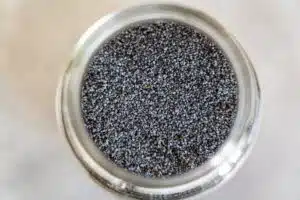
Benefits of Chia Seeds (Salvia hispanica) in Daily Food
Chia Seeds (Salvia hispanica) Fats in Chia Seeds Protein & Fibre in Chia Seeds Vitamins & Minerals in Chia Seeds Health Benefits of Chia Seeds

Boiled vs Scrambled, White vs Brown – The Truth About Eggs
Chicken eggs are low-calorie, high protein and one of the highly nutritious foods whether eaten as boiled, scrambled, white or brown eggs. They have a

Fatty Acids, Triacylglycerol, Cholesterol – The Wonders of Fats!
Are fats healthy? Check out the wonders of fats – the fatty acids such as MUFA and PUFA, the triacylglycerol, and the cholesterol. As a

Omega-3 eggs: Hope or Hype?
What are Omega-3 eggs? Omega-3 eggs are eggs fortified with any of the two different omega-3 fatty acids: docosahexaenoic acid (DHA) and alpha-linolenic acid
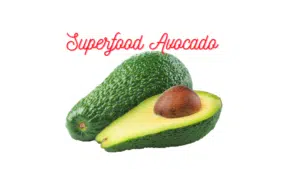
Superfood Avocado
Is Avocado A Superfood? Is Avocado a Superfood? Well, yes! Today, we will talk about a superfood, or should I say a super fruit:
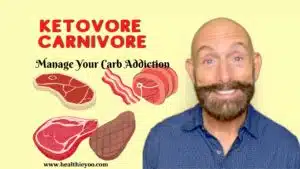
Ketovore – Eat Well So You Can Feel and Look Well!
What is ketovore? What is a carnivore? The carb addiction teacher explains the difference between ketovore and carnivore and why it is important to be

